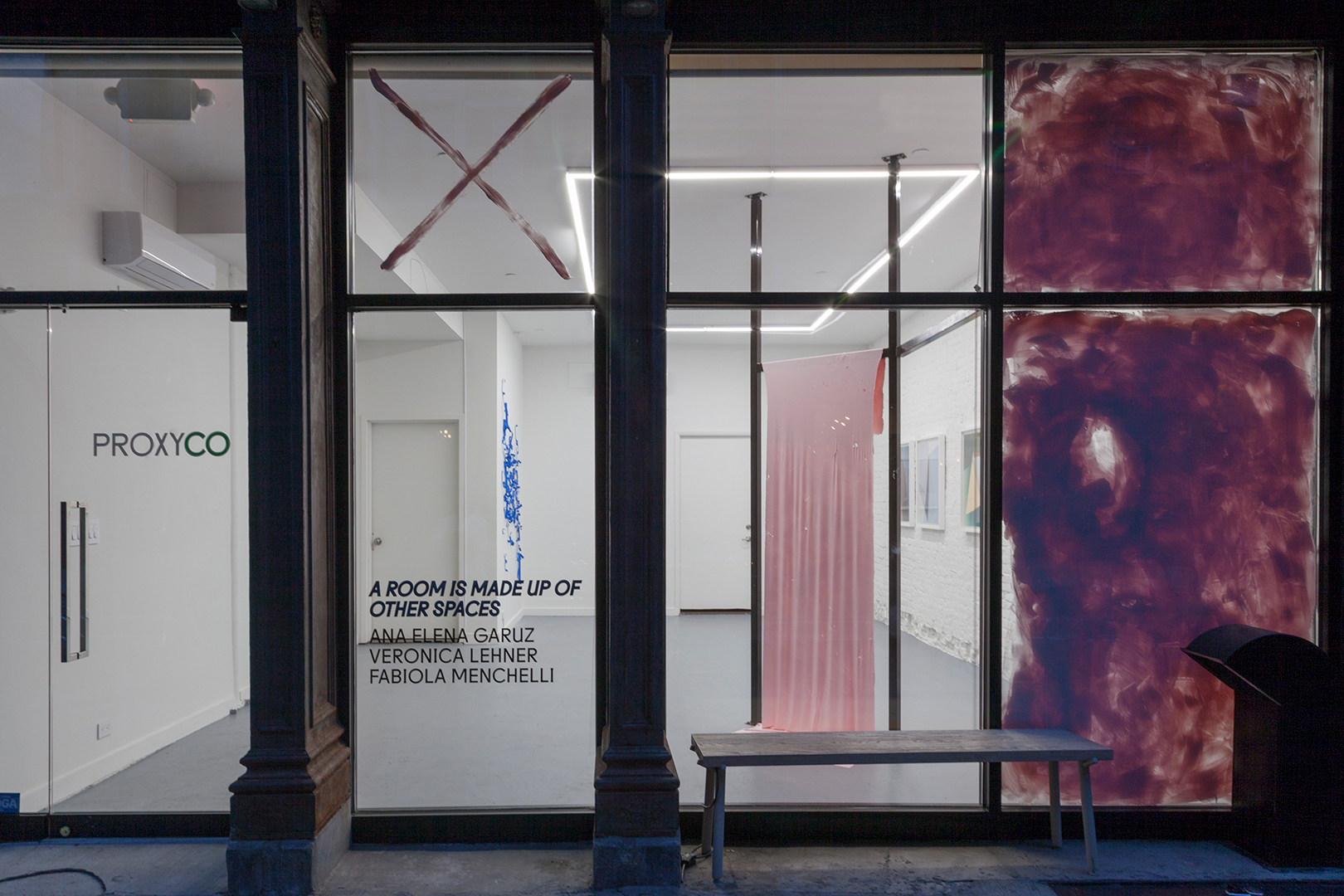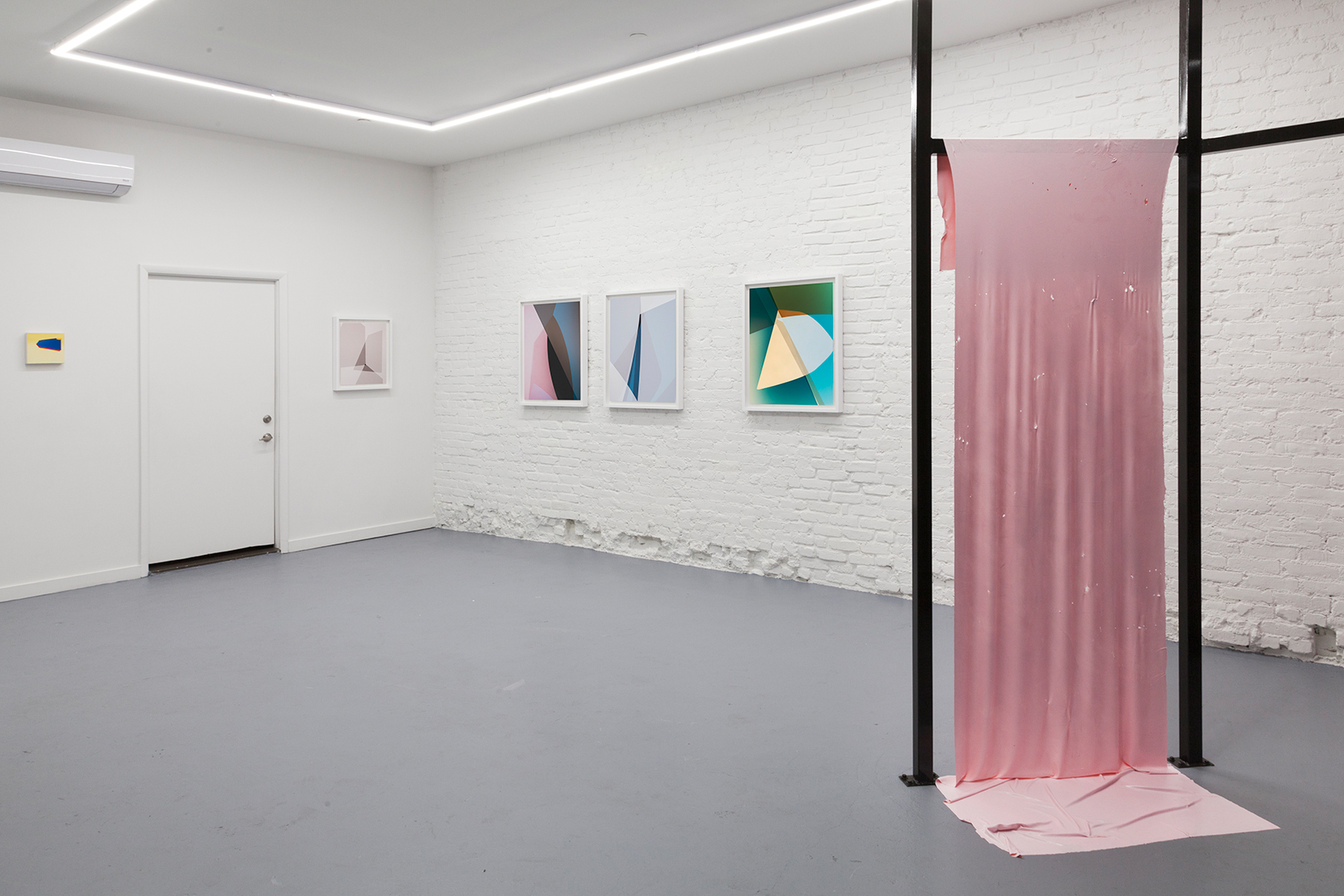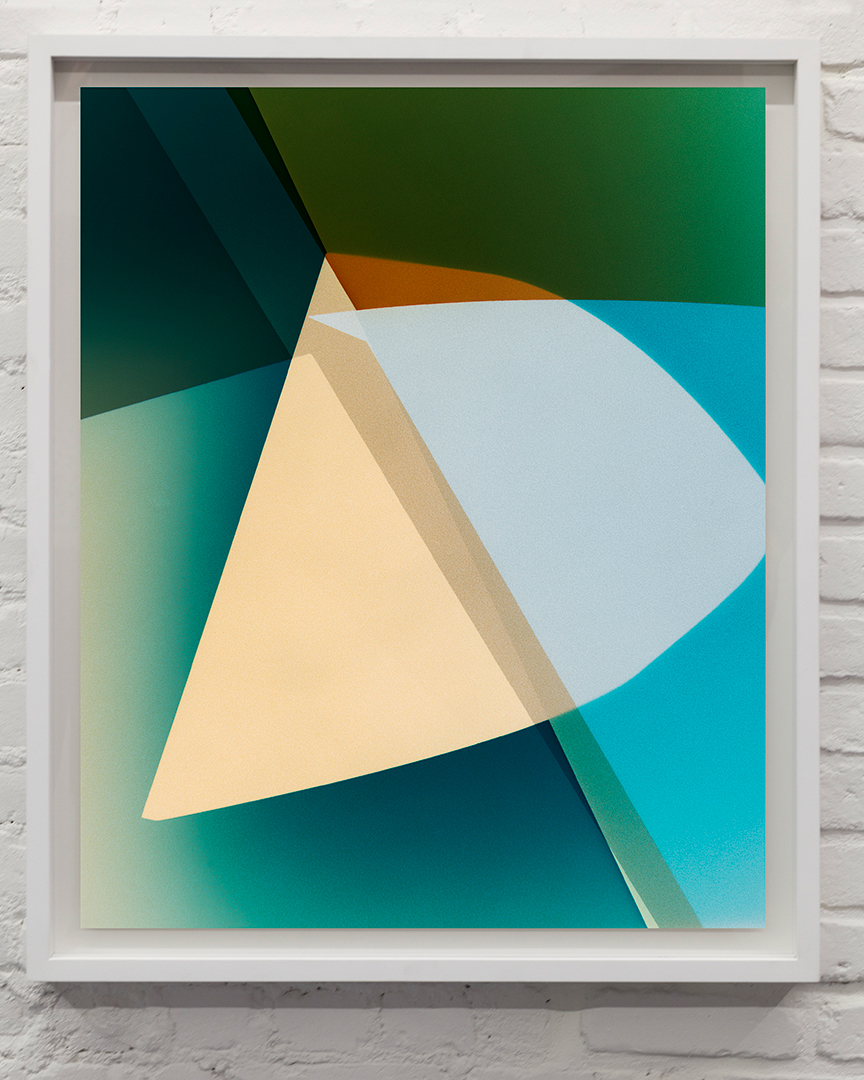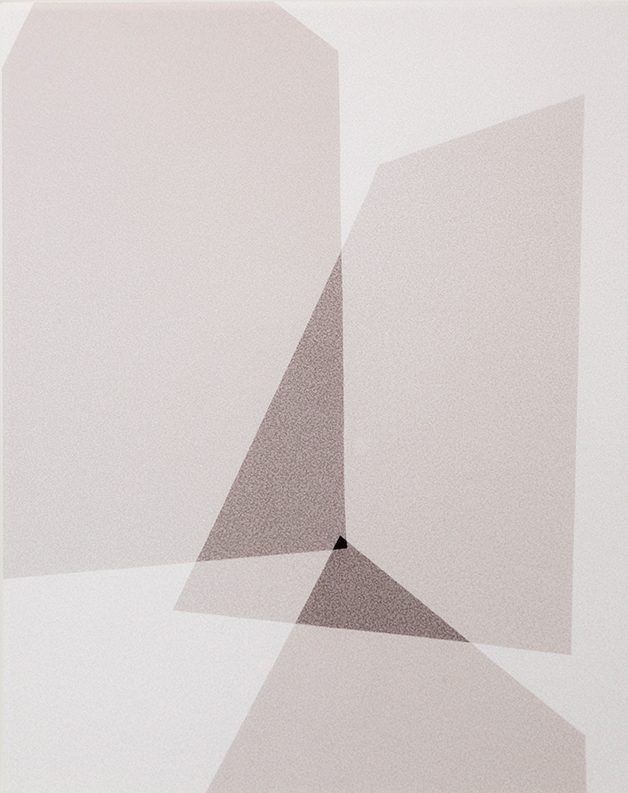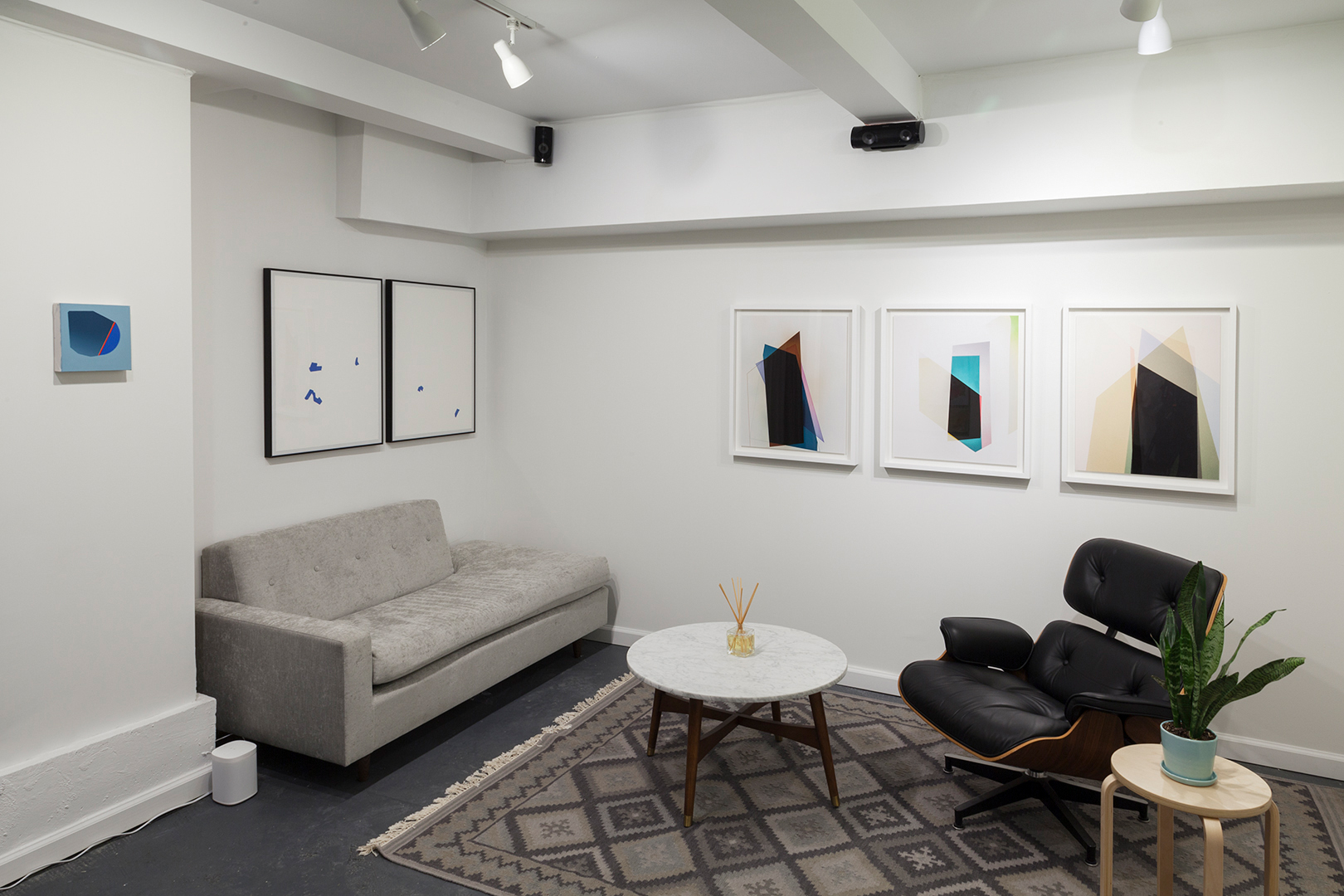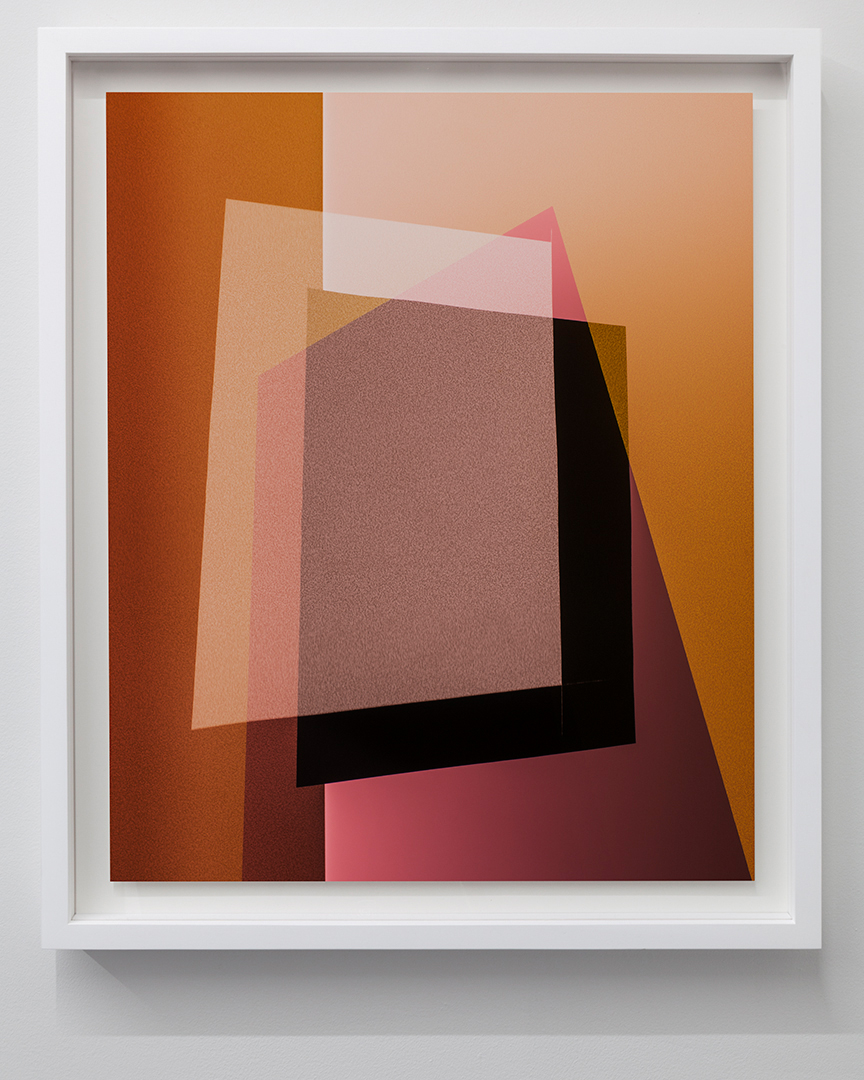The work of these artists constantly deals with the notion of space or engages with specific spatial situations for their production and presentation. Although working in different media – painting, sculpture or photography – they privilege non-figurative and constructivist solutions and share, among other things, an interest in color and other pictorial concerns that can be tied to the legacy of monochrome painting and geometric abstraction. For this exhibition, they actively participated in different ways in its articulation and final arrangement. Considering the architecture of PROXYCO, the presence of their paintings, sculptures and photographs creates a complex spatial scene and establishes a new set of situational relations. As such, these interventions refuse to conceptualize space as a passive receptacle. Instead, their works deals with its transformation. It is space as a moment of change, a passage from one configuration to another.
Veronica Lehner´s work, produced specifically for this exhibition, uses the façade of the gallery as a point of departure. Connecting exterior with interior, a section of the glass frame seems to unfold towards the inside through a solution that gathers architectonic, sculptural and pictorial concerns. In the interior of the gallery the metallic grid of the façade is used to create various sculptural elements that serve as support of two surfaces of pure paint that hang and stretch from them and that seem to extend the color that the artist has applied on the window. This group of elements – in which the boundaries between architecture, sculpture and monochrome painting seem to blur – transform the way the space is perceived and accessed. Their presence determines a new spatial understanding of the gallery and some of its features, such as the paint of the window, that can even affect issues of light and reflection.
Ana Elena Garuz’s wall pieces highlight the presence of this constructive element and explore it as a plastic surface. Her work presents a study in line and materiality, and its relation with architecture, by alluding to the presence of a quotidian object: blue tape.
This kind of tape is pervasive in spaces that deal with art, such as studios, museum and galleries. For Garuz, this object can be seen through a poetics of the everyday. She alludes to it through painting and sculpture, in connection to a wall, in order to create a sort of mural in which color, rhythm, and materiality are paramount. Seen as a mural, her work recalls the perceptual and kinetic concerns of postwar modern art practices in Latin America and elsewhere.
Through multiple exposures and different constructivist solutions, Menchelli creates abstract compositions that seek to trace, translate, balance and expand the space within the frame in a simple gesture. The reference to Constructivism in her work can be understood in two different ways. On the one hand, they are actually photographic constructions as those realized by artists such as László Moholy Nagy, El Lizzitsky and other artists associated with the soviet historical avant-garde. On the other hand, her works have a painterly quality that can easily recall the Constructivist-Concrete legacy in Latin American modern art. Her photographs tend to establish a particular dialogue with the spaces where they are exhibited. Her images seem to open up to other complex spaces, articulated through different layers and with depth.
-Daniel Garza Usabiaga
